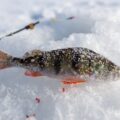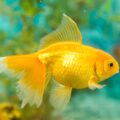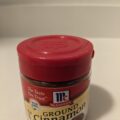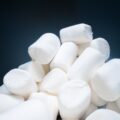Catfish are known for their eclectic appetite, often consuming a wide variety of foods found in their natural habitat. Anglers looking to attract catfish may wonder about the efficacy of various baits, including cheese. Cheese is an accessible and inexpensive bait option, but its success in attracting catfish is subject to several factors, such as the type of cheese used, the scent it carries, and the catfish species being targeted.
Experienced fishermen have noted that catfish respond to strong-smelling baits due to their keen sense of smell. Cheese, particularly types with pungent aromas, can be attractive to catfish. It has a potent scent that can travel through the water, reaching catfish in various environmental conditions.
Besides the smell, the texture of cheese is an important consideration. Soft cheeses tend to disburse more effectively in water, creating a scent trail that can lead catfish to the bait. Hard cheeses, although less aromatic when underwater, can serve as a sturdy option that resists small, bait-stealing fish. Therefore, the question of whether catfish will eat cheese as bait is not a matter of possibility but rather revolves around how to optimize its use for successful catfishing.
Understanding Catfish Behavior
To effectively fish for catfish using cheese as bait, one needs to comprehend their natural feeding behaviors and predation tactics.
Dietary Habits
Catfish are opportunistic bottom-feeders with a diet that typically consists of a variety of items. They primarily consume:
- Aquatic insects: Larvae and pupae stages of different insects.
- Small fish: Both living and dead, depending on availability.
- Crustaceans: Such as crayfish.
- Plant material: Occasionally ingesting algae and other plant matter.
In terms of bait preferences, catfish show a fondness for strong-smelling foodstuffs, which has led to cheese being experimented with as bait.
Hunting Techniques
When hunting, catfish utilize their well-developed sense of smell and taste, which are highly effective in muddy or murky waters where visibility is low. They employ two main techniques:
- Active searching: Roaming the bottom or even mid-water levels to find prey by scent.
- Ambush: Lying in wait to quickly capture unsuspecting prey that wanders too close.
This understanding of catfish behavior can inform the strategies used by anglers, including the choice of bait, to increase the likelihood of a successful catch.
The Role of Cheese as Bait
Cheese is often selected as bait for catfish due to its strong odor and pliability, which allows for easy rigging on hooks.
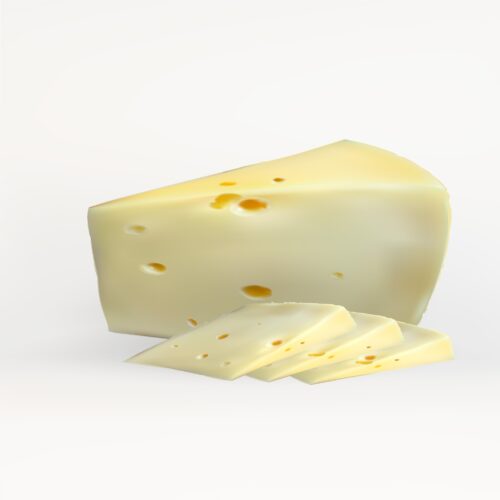
Types of Cheese Used
Processed cheeses are commonly preferred for catfish bait because of their intense smell and durability in water. Anglers typically use:
- American cheese
- Cheddar cheese
- Limburger
These types are selected for their ability to hold onto the hook while releasing enticing odors underwater.
Effectiveness for Different Catfish Species
The use of cheese as bait can see varying degrees of success based on catfish species. Notable responses are as follows:
- Channel Catfish: Highly attracted to smelly baits such as cheese.
- Blue Catfish: They can be caught using cheese but often prefer live baits.
- Flathead Catfish: Less likely to go for cheese, favoring live bait or cut bait instead.
It is important to note that local preferences and conditions can affect the effectiveness of cheese as bait for these species.
Preparing Cheese Bait
When preparing cheese bait for catfishing, it’s essential to create a mixture that is both enticing to the fish and easy to use. The recipes provided are tried-and-true options, while proper storage and handling will ensure the bait remains effective.
Cheese Bait Recipes
- Basic Cheese Bait Ingredients:
- 1 cup shredded cheddar cheese
- ¼ cup flour
- 1 tablespoon garlic powder
- Combine the ingredients in a bowl.
- Knead into a dough.
- Form into small balls suitable for hooks.
- Enhanced Cheese Bait Ingredients:
- 1 cup processed cheese spread (e.g., Velveeta)
- ½ cup bread crumbs
- 2 tablespoons sugar
- 1 teaspoon anise oil (for scent attraction)
- Heat cheese in a microwave until soft.
- Stir in the remaining ingredients until you have a pliable mixture.
- Shape into bite-sized pieces for fishing.
Storage and Handling Tips
- Short-Term Storage
- Store prepared cheese bait in an airtight container.
- Keep in a cool, shaded location while fishing, away from direct sunlight.
- Long-Term Storage
- For extended storage, wrap the bait in wax paper and store it in the refrigerator.
- Can be stored for up to one week; check for spoilage before use.
- Handling
- Use gloves when preparing and handling bait to prevent the transfer of human scents.
- Ensure the bait is securely fastened to the hook to prevent loss in the water.
Fishing Techniques with Cheese Bait
Cheese bait can be highly effective for catching catfish due to its strong smell that catfish find irresistible. Knowing how to properly set up the fishing rig and choosing the best times for fishing are crucial for a successful catch with cheese bait.
Setting Up the Fishing Rig
When using cheese as bait, it’s important to secure it to the hook so that it stays submerged and doesn’t dissolve or fall off during casting or in the water. An effective method is to use a treble hook, which provides multiple points to embed the cheese. To improve the chances of keeping the cheese on the hook, anglers often use bait holder hooks or create a small cheesecloth pouch to encase the cheese and then hook it onto their line.
- Hook Selection: Treble hook or bait holder hook.
- Cheese Preparation: Firm cheeses are cut into small cubes; soft cheeses are molded around the hook or placed in cheesecloth.
- Rig Type: A simple slip sinker rig often suffices, with the sinker set a foot above the hook to ensure the cheese bait is positioned just above the bottom.
Best Times to Fish with Cheese
The best times to fish with cheese for catfish are usually early morning or late evening when catfish are most active and are foraging for food. During these times, the scent of cheese is most potent in the water, drawing catfish to the bait more effectively.
- Morning: Just before dawn, catfish start their feeding rounds.
- Evening: Dusk into twilight, when catfish feeding is at its peak.
- Seasons: Spring and summer bring higher catfish activity; cheese bait works best in warmer waters.
Case Studies and Angler Reports
This section pulls from specific accounts and studies to analyze the effectiveness of cheese as bait for catfishing.
Success Stories
Tennessee River, 2020: Angler reports indicate a successful catch of a 20-pound blue catfish using cubed cheddar cheese. The angler noted that cheese was left to ‘ripen’ in the sun for several hours before use, possibly increasing its attractiveness to catfish due to a stronger scent.
Mississippi Angler’s Club, 2021: A comparative bait test among members showed that cheese bait, particularly Swiss cheese, was surprisingly effective, outperforming chicken liver in catch rates during a spring fishing event.
Comparative Analysis with Other Baits
- Stink Bait vs. Cheese: A 2019 field study conducted on the Missouri River observed that while stink bait resulted in quicker strikes, cheese bait had a higher success rate with channel catfish over a 24-hour period.
- Worms vs. Cheese: An ongoing angler log comparison demonstrates that while earthworms attract more diverse species, cheese specifically attracts catfish, with anecdotal evidence pointing to a particular preference for stronger-smelling cheeses.
Note: These studies imply that cheese can be an effective bait for catfishing, although its success may vary based on factors like the type of cheese used and local catfish feeding habits.
Environmental Considerations
When considering using cheese as bait for catfish, environmental factors must be taken into account, particularly the impact on water quality and the adoption of sustainable fishing methods.
Impact of Cheese on Water Quality
Cheese can alter water quality if used excessively as bait. Decomposing dairy products introduce organic materials and nutrients into the water, which can lead to:
- Increased biological oxygen demand (BOD): As bacteria break down the cheese, they consume oxygen, potentially leading to lower dissolved oxygen levels which can stress aquatic life.
- Eutrophication: Nutrient addition can cause excessive algae growth, further depleting oxygen and harming water quality.
Best Practices for Sustainable Fishing
Fishing with cheese for catfish should be approached with practices aimed at preserving ecosystems:
- Use in moderation: Limit the amount of cheese used to prevent excess waste.
- Biodegradable options: Choose cheeses that break down easily without leaving harmful residues.
- Catch and release: Respect local guidelines and consider the benefits of catch-and-release to maintain fish populations.
By focusing on these practices, anglers contribute to the overall health of aquatic environments while enjoying their fishing activities.
Legal and Regulatory Framework
When considering the use of cheese as bait for catfish, anglers must be mindful of the legal and regulatory framework governing fishing practices, which includes both general fishing regulations and specific bait restrictions.
Fishing Regulations
Fishing regulations are determined by local, state, and federal authorities and can vary widely. They typically outline:
- Fishing Seasons: Specific times of the year when anglers are allowed to fish for catfish.
- Size and Bag Limits: Regulations on the minimum size of catfish that can be kept and the number of catfish an individual can retain in a day.
- Fishing Licenses: Requirements for purchasing a fishing license prior to engaging in the activity.
Bait Restrictions
Bait restrictions are put in place to protect local ecosystems and can include:
- Permissible Baits: A list of baits that are allowed, which can sometimes include cheese.
- Prohibited Baits: Bait types that are harmful to the environment or could introduce diseases into waterways and are therefore not allowed.

